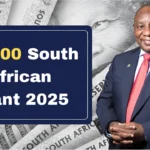Philippines Exits FATF Grey List: The Philippines has successfully exited the Financial Action Task Force (FATF) Grey List, marking a significant milestone in the country’s financial and economic development. This achievement reflects the government’s commitment to strengthening anti-money laundering (AML) and counter-terrorism financing (CFT) frameworks. However, while the Philippines celebrates this success, countries like Laos and Nepal still face challenges in addressing financial security concerns, which may impact their global economic standing.
What Is the FATF Grey List?
The FATF Grey List includes countries that have been identified as having strategic deficiencies in their AML and CFT measures but have committed to addressing them through time-bound reforms. Being on the Grey List subjects a nation to increased monitoring, which can negatively impact foreign investments, banking relations, and overall economic stability.
How the Philippines Achieved Its Exit
The Philippines was added to the FATF Grey List in June 2021 due to concerns over money laundering risks, weak regulatory oversight, and gaps in financial monitoring. Since then, the country has implemented several key reforms to strengthen its financial integrity, including:
- Enhanced AML/CFT Regulations: The government amended its Anti-Money Laundering Act to introduce stricter compliance requirements for banks and financial institutions.
- Increased Monitoring & Reporting: Financial institutions were required to report suspicious transactions and ensure better due diligence on large transactions.
- Strengthened Law Enforcement Cooperation: Authorities improved coordination between regulatory bodies, law enforcement agencies, and international organizations to track and combat illicit financial activities.
- Imposing Stricter Penalties: The Philippines imposed higher penalties on institutions and individuals violating AML/CFT rules to deter financial crimes.
As a result of these reforms, the FATF recognized the Philippines’ progress and officially removed it from the Grey List in 2025.
Impact of the Exit on the Philippines
The Philippines’ removal from the FATF Grey List will have several positive effects, including:
Improved Foreign Investment: International investors and financial institutions are more likely to do business with a country that complies with global financial regulations.
Stronger Banking & Trade Relations: Banks in the Philippines will face fewer restrictions when dealing with international counterparts.
Lower Transaction Costs: With reduced scrutiny, cross-border transactions and remittances from overseas Filipino workers (OFWs) will become smoother and less costly.
Boost to the Economy: The country’s financial credibility will encourage economic growth, creating new opportunities for businesses and individuals.
Challenges Ahead for Laos and Nepal
While the Philippines celebrates its exit, Laos and Nepal remain on the FATF Grey List, facing significant financial and regulatory hurdles.
Laos
Laos has struggled with weak financial regulations, inadequate enforcement of AML measures, and limited financial transparency. The country must address these key issues:
- Strengthening enforcement mechanisms for AML and CFT laws.
- Enhancing financial intelligence unit capabilities to monitor suspicious transactions.
- Increasing cooperation with international regulatory bodies to prevent illicit financial activities.
Nepal
Nepal faces similar challenges, including inadequate compliance in banking regulations and risks of money laundering linked to informal financial networks. To exit the Grey List, Nepal needs to:
- Improve banking transparency and enforce stricter KYC (Know Your Customer) policies.
- Increase collaboration with financial institutions to detect and prevent suspicious activities.
- Implement stronger regulatory reforms to ensure compliance with global financial standards.
If Laos and Nepal fail to address these issues, they may face further scrutiny from international financial bodies, making it harder for their economies to attract foreign investment and trade partnerships.
Conclusion
The Philippines’ removal from the FATF Grey List highlights its commitment to financial reforms and global regulatory standards. This success will strengthen the country’s economy, boost investor confidence, and improve international banking relations. However, Laos and Nepal still have significant work to do to achieve the same status. Their governments must take urgent action to implement strong AML/CFT policies to avoid the economic consequences of prolonged Grey List status.
As the global financial landscape evolves, compliance with FATF regulations remains a key factor in maintaining a country’s economic stability and international reputation.
Global FATF Grey List FAQs (FQA)
1. What is the FATF Grey List?
The FATF Grey List includes countries with deficiencies in their Anti-Money Laundering (AML) and Counter-Terrorism Financing (CFT) measures but have committed to improving them. These nations face increased monitoring and are required to implement reforms.
2. Why was the Philippines on the FATF Grey List?
The Philippines was placed on the Grey List in 2021 due to concerns over weak AML regulations, financial transparency issues, and risks related to money laundering and terrorist financing.
3. How did the Philippines exit the FATF Grey List?
The Philippines strengthened its financial monitoring, imposed stricter AML regulations, enhanced law enforcement cooperation, and improved banking compliance, leading to its removal from the list in 2025.
4. What are the benefits for the Philippines after exiting the Grey List?
- Increased foreign investment and economic growth.
- Improved international banking and trade relations.
- Lower transaction costs for cross-border payments and remittances.
- Enhanced financial credibility on the global stage.
5. Which countries are still on the FATF Grey List?
As of 2025, countries like Laos and Nepal remain on the Grey List due to ongoing financial transparency issues, weak AML frameworks, and insufficient enforcement of financial regulations.













